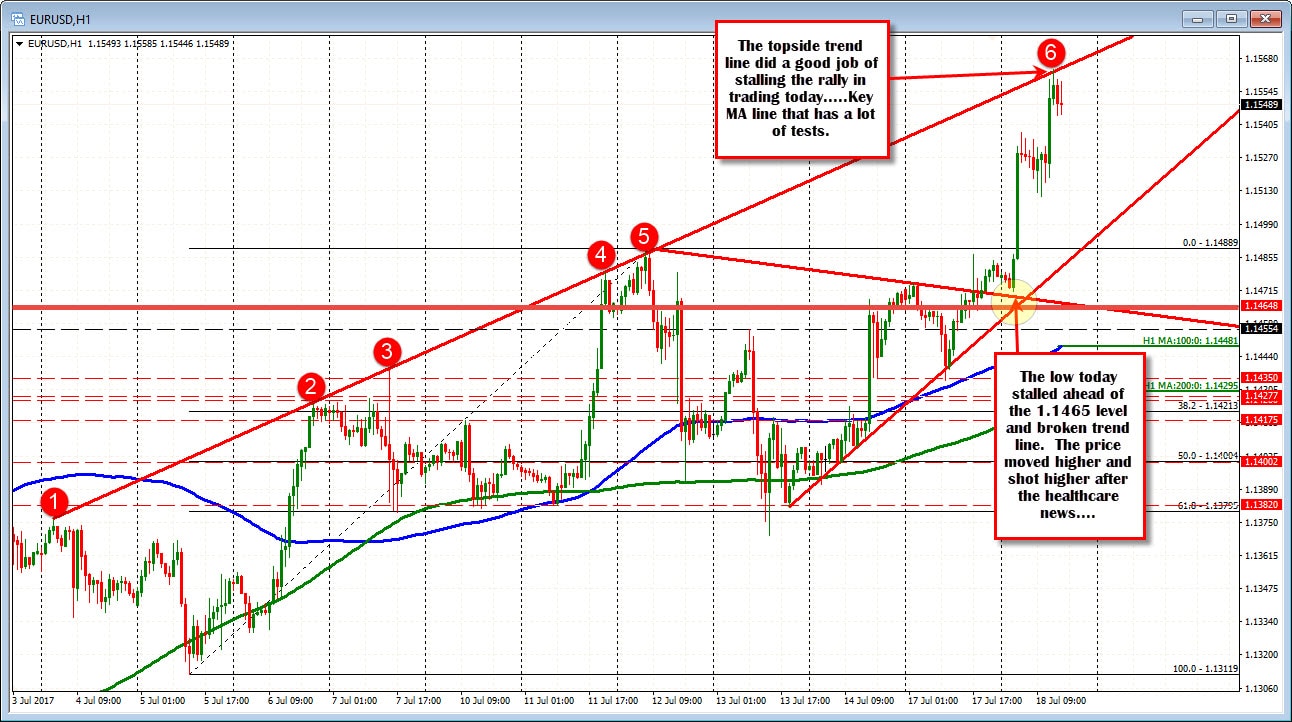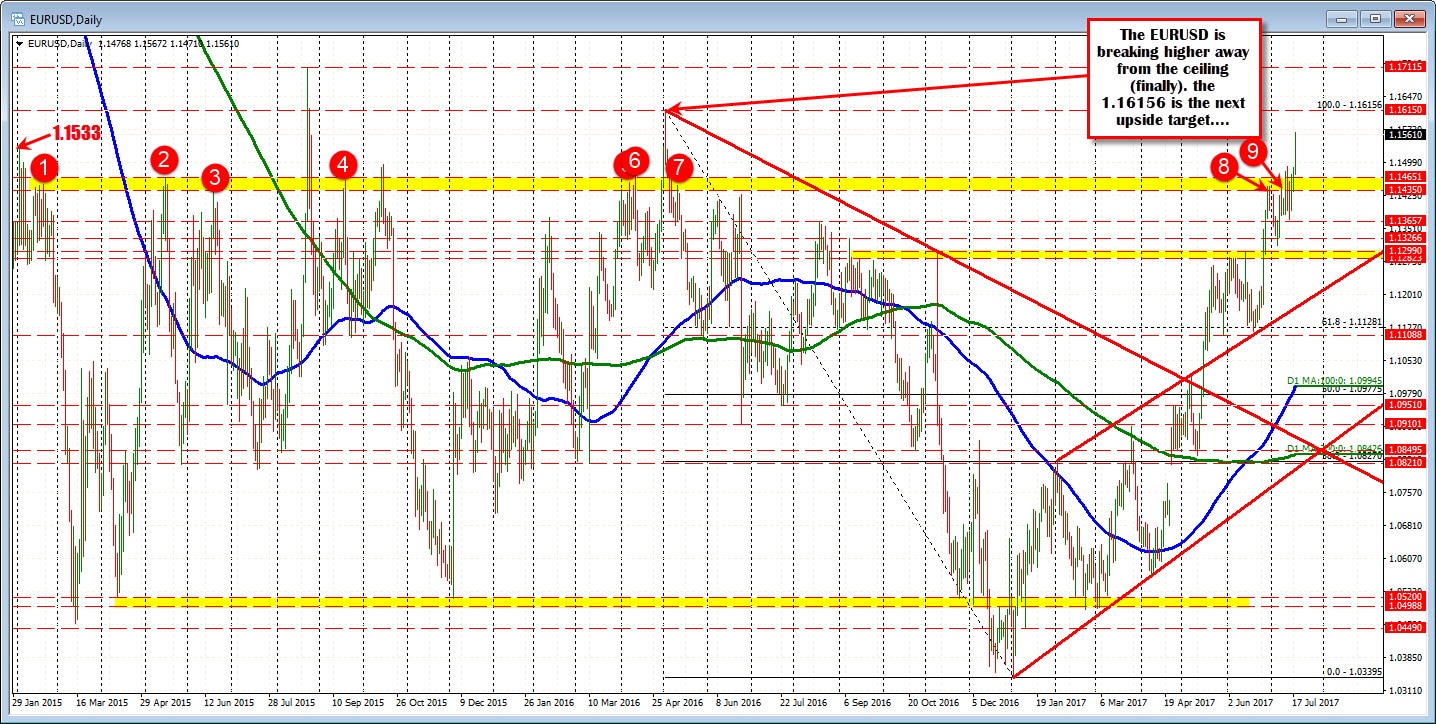There was a time in the not too distant past that, if every indicator known to man was screaming to short the Euro, then be prepared to lose a fortune. No matter what the fundamentals or technicals were telegraphing, the Euro continued to be buffeted by unknown forces, even at the height of the crisis in Europe. The stories at the time spoke of Arab or Chinese monies coming to the fore or of central bankers determined to re-balance their reserve holdings to reflect less dependence on the almighty U.S. Dollar. Believe it or not, everyone is once again screaming to short the Euro? Any takers?
A brief history lesson is on order. The Euro was flying high in July of 2008, topping out at just above 1.60, but then a fall from grace became the order of the day. The Euro would fall precipitously. Analysts would shout that parity was a foregone conclusion, and then suddenly, like a Phoenix from the ashes, it would rise like a rocket for no known reason. This rollercoaster continued on until 2014. Many fund managers lost fortunes and their jobs in the process, but, once central bank policy divergence gripped the masses, the Euro was reminded that gravity truly does exist. In eight short months, the Euro fell from 1.40 to 1.05. The short trade had finally come to pass, and fortunes were made.
It finally found support at a bit below 1.05 in early 2015, but the damage had been done. From that point on, the combined currency has vacillated between 1.05 and 1.15, never quite having the energy of conviction to break through and go higher. But wait! Wherever the previous capital flows of yore had departed to, it seems that they re-emerged with a vengeance after champagne corks popped to start 2016. From 1.04, when parity was on everyone’s lips, the Euro turned north and shot forward. Forecasters for 2017 were pointing south of 1.00, but a few outliers believed that 1.10 was in the cards. It seems that all bets are off the table. The experts have erred once more. The Euro is above 1.15, as of today, and shows no signs of pulling back.
What is the Euro metaphor of today to be? We have used about every one there is. I mentioned the Phoenix above, but Icarus flying too high and Atlas shrugging from the weight upon his shoulders have been overused, as well. The “teeter-totter” in the above diagram will have to do for the moment, since it speaks to a balance, but a precarious one at that, with no indication of which side will gain the advantage. The “boo birds”, if you will, are still quite righteous with their overbearing arguments for parity before yearend, but there is a band of Euro supporters, who are ecstatic at the moment.
What are the reasons for the Euro’s unexpected resurgence of late?
Let’s take a look at one of the short-term annotated charts that is making the rounds:

This chart could easily be used in textbooks to demonstrate the power and predictability of diagonal resistance. No less that six times, as noted on the diagram, has the Euro run into a barrier of resistance along the upper red diagonal line that has been bolded for emphasis. As noted, “The topside trend line did a good job of stalling the rally in trading today.” The author of this chart has also drawn a support diagonal, as well, which would converge somewhere around the 1.17 to 1.19 range.
It would be easy to shrug off, like Atlas, the recent surge in the Euro’s fortunes as nothing more than a fluke in timing and investor sentiment, but European bankers are not taking the rise lightly. Per currency experts at Danske Bank: “Since late 2016 speculators have markedly changed their attitude towards the Euro: Shorts have been covered and in early May non-commercial positioning in EUR turned net long for the first time since 2014. This suggests that risks are now roughly balanced for EUR/USD from a pure positioning point of view.”
These undercurrents are what produce buying pressure and ultimately appreciation dynamics. There are definitely roadblocks on the horizon, as the converging diagonal pattern above would suggest. Fundamentals are in abundance that could weigh heavy on the Euro, but, at the moment, there is a great deal of “noise” that persists and clouds the market’s judgment. Divergent monetary policy, Euro-area bank stress, the lack of sustainable growth in inflation measures, and Brexit negotiations will not disappear anytime soon. To make matters worse, bond yields are worsening in a form of “mini-taper tantrum” after ECB members have hinted at possible QE tightening.
The Euro, however, has pushed these concerns aside, or, perhaps, the world political stage has overshadowed and unduly influenced the positive path of the EUR/USD pair. As noted in the chart, the Euro appeared to be stalled, but bolted upward when the Trump political agenda, i.e., healthcare reform, ran into resistance in the Senate. The funds that were to finance tax cuts, military expansion, and infrastructure projects were suddenly suspect, as was the entire Trump Trade thinking on the street. USD problems have a way of boosting other currency pairs, as well. Commodity currencies across the board have also been in ascendance.
What is the nature of near-term headwinds that could block a surging Euro?
For the record, long-term resistance points happen to be formidable from a technical perspective, as depicted in the following chart:

On nine occasions in the past two and one-half years, the Euro has attempted to break through 1.533 and move ahead to no avail. The cat has used up its nine lives, another metaphor to ponder. Will the tenth time be the charm? There are Euro enthusiasts that believe in a “break-through” scenario. When they look at even a longer-term chart, one that goes back to 2008, there is a natural down trend diagonal line, which actually points to a target point of 1.25. Is that move a real possibility? Analysts foresee momentum carrying the Euro past 1.17, but they also see a retrenchment back down to 1.13 or even further down on the scale.
Danske Bank experts also argue that, “Sentiment-/growth-related flows have seemingly been key in taking EUR/USD to this side of the 1.10 level, but we stress the potential for central banks to halt the uptick over the coming weeks. In our view, it is a little too early for the ECB to signal an easing exit,… [which] should keep the cross in the 1.08-1.14 range within three months.”
What about central bank monetary differences? Per one reporter: “In remarks delivered to the U.S. House Financial Services Committee, Janet Yellen reiterated that the gradual rate hike outlook stays in place. At the same time, Mario Draghi, the head of the European Central Bank, has recently played down speculation that ECB intends to drop its experiment with negative interest rates later this year. In short, the Fed remains relatively hawkish, while the ECB is still committed to keeping rates on hold at least until the end of QE.”
As a consequence, bond yield spreads between German and U.S. 2-Year government bonds have narrowed, actually moving into negative territory. The spread remains negative, as of today, and hovers near an all time low, a true bearish signal, if ever there was one. Inflation data is nowhere near a trend to an accepted target, and we have not even mentioned the state of many of the banks in the weaker member nations of the EU. In this case, Greece persists, an infamous player in the “PIGS” anagram, which also includes Portugal, Italy, and Spain. The hits keep coming, and, sooner or later, the market must take notice.
Divergence of central banking policy, however, remains the largest threat to the Euro’s recent rise to stardom, and it will remain so for some time to come. One significant analyst noted that, “Making a couple of reasonable assumptions, if our analysis is correct, the Fed’s balance sheet will shrink by almost $200 billion before the ECB stops expanding its balance sheet (conservatively mid-2018). We also expect the Fed to raise rates at least two or three more times before the ECB will lift its deposit rate out of negative territory.” If now is not the time to short, then wait. A better time will appear.
How have other currency pairs been reacting to market forces of late?
As the old saying goes, a rising tide raises all ships. The travails of the U.S. Dollar have been highly publicized and have provoked a series of negative headlines, many with the following theme: “Dollar Dumped Over Doubts On U.S. Economic Agenda”, and, as the USD wobbles, the corresponding currency on the other side of the deal tends to prosper. Commodity currencies have rebounded across the board. The Aussie. The Kiwi, the Loonie, and the Norwegian Krone, and even the Mexican Peso have prospered at the expense of the Greenback. The Yen also benefited, but only by 200 pips.
As for the British Pound, its rise came weeks back, but BOE Governor Carney may have stalled its resurgence by making confusing statements to the press. One would think that he would have learned his lesson years back when his exuberance overstepped the reality of the moment, and when reality set in, the Pound plummeted. Never act as if the future is certain and that your views on events to come are an ironclad cinch. He has been hinting at a rate hike in August, but the data, CPI for one, is just not there to support his prognostications. As a result the Pound has been range bound since April, although there was a small bump when the Trump agenda suddenly slipped.
Concluding remarks
The question is, “Where do we go from here?” The Euro and many of its brethren have been in appreciation mode, reacting to negative political press from the United States, rising iron ore and other commodity prices, and the belief that China is about to kick everything into a higher gear. How long will the USD remain hostage to fickle sentiment before the reality of true fundamentals kicks in? The jury is out for now.
A weak Dollar actually favors the Trump administration. In the meantime, what is the trade? It is too early to short the Euro. The upward trend has been demonstrative, but one should never attempt to pick a top. Patience will be rewarded, but only short when the downtrend breaks below what could be termed ordinary profit taking.
Risk Statement: Trading Foreign Exchange on margin carries a high level of risk and may not be suitable for all investors. The possibility exists that you could lose more than your initial deposit. The high degree of leverage can work against you as well as for you.